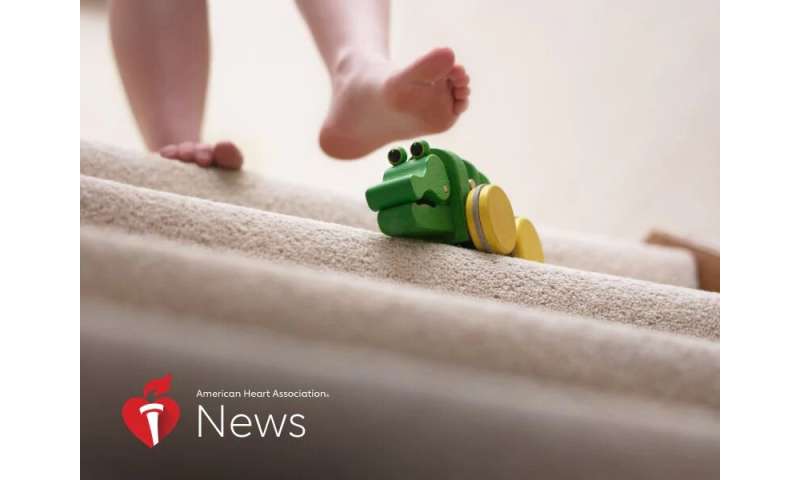

Nobody ever wants to find themselves in a hospital emergency room. But with COVID-19 cases crowding hospitals across the nation, preventing unnecessary accidents and injuries that require emergency care can help everyone stay safer.
“More than ever, this is a time to use caution,” said Dr. Kate Cronan, a pediatric emergency physician at Nemours/Alfred I. duPont Hospital for Children in Wilmington, Delaware. “We want to help everyone avoid serious injuries that would require a visit to the emergency room.”
Experts caution this can be more challenging today, with families cooped up indoors and children getting antsy. Seniors, already at high risk for falls, also will have to take extra steps to stay safe during the pandemic.
According to the Centers for Disease Control and Prevention, roughly 29 million people end up in the emergency department each year due to unintentional injuries. Among older adults, 1 in 4 suffer injuries from falls each year, the majority of which occur inside the home.
Don’t hesitate to get emergency care if you need it. But to stay safe from injuries and away from emergency rooms, the three major things seniors should focus on are “maintaining stamina, strength and flexibility, making sure the home is as safe as possible and knowing how to get up, if they should fall,” said Jill Breysse, a researcher at the National Center for Healthy Housing, a Maryland-based nonprofit.
Breysse has been analyzing results from a Johns Hopkins School of Nursing program called CAPABLE, short for Community Aging in Place–Advancing Better Living for Elders. It provides assistance to low-income seniors to help them age safely in their own homes.
“Falls in the home are a major way older adults get injured,” she said. “It’s very important in general to take steps to prevent this, but the current situation is a reminder of things we should be doing all of the time.”
Preserving balance and strength is an important step in preventing falls, Breysse said. To do this, seniors can engage in simple exercise routines appropriate to their physical abilities and in consultation with their health care providers. The National Institute on Aging at the National Institutes of Health offers a series of exercise videos for seniors to help maintain balance at its Go4Life website.
“If they haven’t done any type of exercise before, they shouldn’t start with aerobics,” she said. “They can start with simple things, like walking from the back door to the front door a few times. It’s boring, but it’s exercise.”
Making sure the house is safe for moving about also is important, she said. The CDC provides a safety checklist to help seniors prevent falls in their homes that includes tips such as removing throw rugs or using non-slip backing on them; not leaving objects on the floor someone can trip over; coiling wires and cords near the wall so they don’t become hazards; and making sure hallways and stairways are well lit.
For people who do fall, the National Institute on Aging offers this advice: Remain still for a few moments to get over the shock. Check for injuries. If you can, roll over onto your side, then slowly get up on your hands and knees and crawl to a chair. Get into a kneeling position one leg at a time, then slowly rise and turn to sit in the chair.
Children also may be at greater risk for accidental injury as they look for ways to distract themselves from boredom or work off the stress of confinement. Cronan advises getting kids outdoors, when possible, to take a break from schoolwork and work off excess energy.
“Avoid crowded areas and mixing with people,” she cautioned. Be sure to follow the social distancing policy of your city or state.
“And this is not the time to experiment with new activities like skateboarding or other things that could be more likely to result in a fall. But if you have a yard, the kids can play games outside. Throw a ball, jump rope, play cornhole or go for a walk. Getting energy out makes people feel better.”
If you’re stuck indoors, “Have a group exercise session, even if it’s just for 15 minutes,” she said, “and let the kids take a turn running it. Do stretching one day or run in place.”
What should you avoid?
Source: Read Full Article